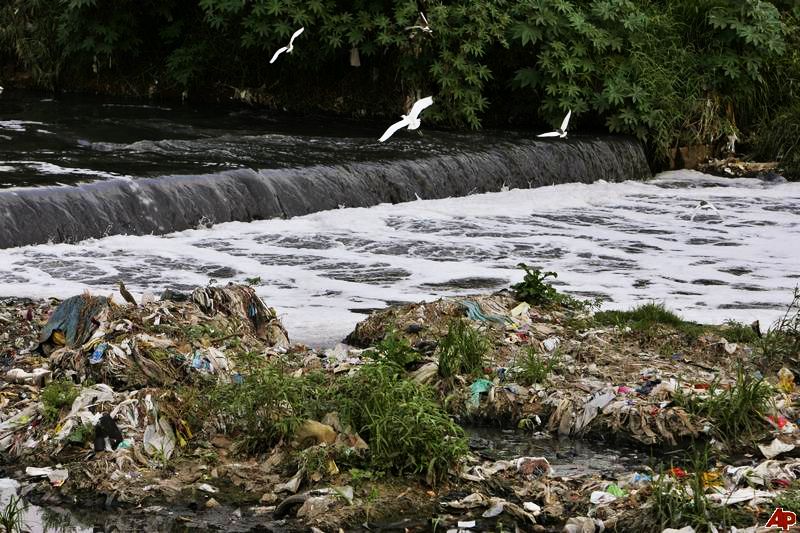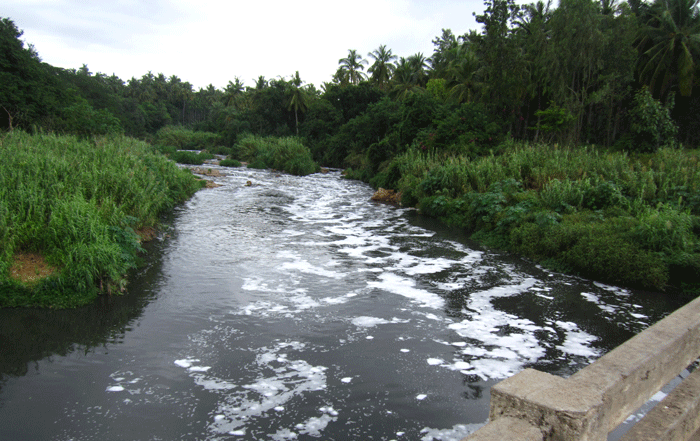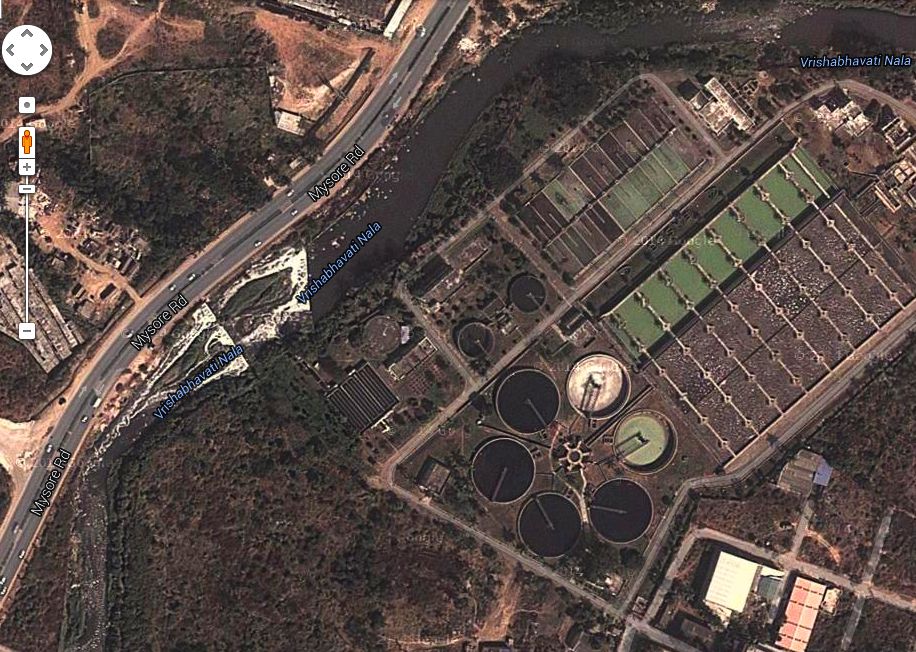Author – Shwetha Kamath

It has been almost four years since I moved to a hostel in Pattanagere, a tiny town on the outskirts of Bangalore city. I pursued BE Biotechnology in R. V. College of Engineering (RVCE) and our hostel was located on the banks of a river. The very thought of living on the banks of a river might make you feel how awesome this place is. A beautiful serene place nestled adjacent to a river away from the city’s chaos would be everyone’s dream location. However, the reality was too disturbing!
Toxic chemicals, pollution, health hazards and other aspects of human impact on environment were not just a part of my syllabus book, but they had got materialized in my surroundings. Vrishabhavathi, the river next to my hostel is the tributary of Akravathy river that originates from a spring at a temple on the Bull Temple Road, Basavangudi and runs parallel to the Mysore Road. Vrishabhavathi is nicknamed “Kengeri Mori” (Mori being drain in Kannada), while Google Maps identifies the river as Vrishabhavathi Nala!
Vrishabhavathi river

As these names suggest, the river has been the carrier of all sorts of industrial toxic waste and domestic waste water for the past few decades now. Sometimes, the Pattanagere bridge crossing is blocked with solid waste during rains, causing the river to overflow and scatter all the plastic waste and dirt on the roads. The entire area gets dirtier and the smell is intolerable.
Shockingly, the river water is said to be treated at the Vrishabhavati sewage treatment plant in Rajarajeshwari Nagar, but the treated water gets equally polluted as it reaches Pattanagere, at a mere distance of about 1.5 km. Due to the detergents and untreated industrial effluents dissolved in the water, a lot of foam is generated. Most of it being alkaline in nature, the river flow causes it to froth and this can be seen across the Mysore Road. Especially, the Kengeri Falls at Jayaramdas stop after RVCE is a sight to behold!
Surprisingly, those residents who complain about this problem are the same ones who wake up early morning to empty their garbage cans into the water. Despite RVCE students making an effort to raise awareness among the residents, Vrishabhavathi is still considered as their very own dump yard. Our brief interaction with the people living on the banks of this river was disappointing too. This was not just a dump yard but a paradise for rag pickers. What a shame!

In 2006, major plans were initiated to clean up this water body as it began infecting people by causing water-borne diseases and other health hazards. High levels of toxic pollutants such as arsenic and zinc were found in the groundwater near the Bhyramangala tank, where Vrishabhavathi. Polluted water has impacted agriculture too, with farmers using sewage water for the cultivation of vegetables, cereals, fodder, and coconuts, which are contaminated.
Although the BWSSB sewage treatment plants cleanse the continuously polluted river, there has been no visible change. These plants might have reduced the amount of toxicity in the water, but the source of this waste needs to be prevented from polluting it. Sustainable ways need to be found to address this major environmental issue of Bangalore city.
Many well known companies and institutions that are located on the banks of Vrishabhavathi river must take an initiative on their own to help themselves and not wait for the government to impose stricter rules. The attitude of “rules are meant to be broken” is what has cast this huge ecological shadow on our city. We can undertake some easy steps and some difficult yet innovative solutions to prevent water pollution:
- Build eco-friendly Root zone waste water treatment plants in industries and large buildings adjacent the river
- Provide incentives like tax benefits and CSR mandates to industries that allow only filtered and treated water into the river
- Utilise the Nullah Park concept from Pune to filter and cleanse small drains that flow into the river
- Cultivate water hyacinths to filter out toxic chemicals such as lead, mercury, cadmium, etc.
- Use Diatoms such as Nualgi to purify the water that flows into the lake
One of my lecturers recalled that there was a time when people took bath, washed clothes and frolicked in the Vrishabhavathi river. However, the grim situation we face today spells doom for our future. Ignoring a serious issue like this is like living in an illusion; I feel ending this illusion is the first step towards making a difference.
Factfile –
timesofindia.indiatimes.com
http://www.thehindu.com
http://en.wikipedia.org
http://www.ijser.org
https://www.flickr.com
http://www.indiawaterportal.org






Simplest way of removing heavy metal waste is treatment with Coffee Husk (Free of cost)
A beautiful spot, almost going waste. 🙁
Well solution is there but…!
Water from Vrishabhavathi river is re-used. At Bidadi, the river is dammed and several recharge bore-wells are dug – which ensure that the ground water is recharged with the water from the river. Soil in the lake bed acts as a filter and water hayacinth is grown extensively on the lake to remove heavy metals.
The ground water is then extracted by near by Coca-Cola factory – via bore-wells and filtered using Reverse Osmois, The filtered water is then supplied back to the city in form of Coca-Cola products!!
The long term effects of soil contamination is not known ( or not made public)
Farms all around the Vrishabhavathi valley use the ground water to grow crops – mainly leafy vegetables, sugarcane and coconuts, which are again consumed in the city. Does these agricultural products have heavy metal? We do not know, but the citizens of the city are happy. (for now)
Bharath it would be great if you could write this method in detail…
Thanks Arun for such detail comment, hope we see more green solutions for Vrishabhavathi 🙂
let us create a mass movement to revive the Vrishabhavathi. We need a river in Bangalore
We can achieve the niceties of a beautiful river flowing through our backyard by reviving this river.
Hello Guys!!!
Its sad to know even with many efforts still there is no reviewing of the same, but well written buddy.
I have a query I moved to nagarbhavi 6th main behind Nammora Thindi hotel last month, Iniatialy we were very thrilled to move into the place as its had huge space and a balcony to relax with prominent place for residential, but very unfortunate we on the 2nd day of movement when we were sitting in the balcony we experience the pungent smell and its increasing day by day.
Just worried about how will it impact our health and what are the outcome of this.
To add moving out is also an option, Kindly suggest if I continue staying here what all precaution to be taken.
TIA
Ajay